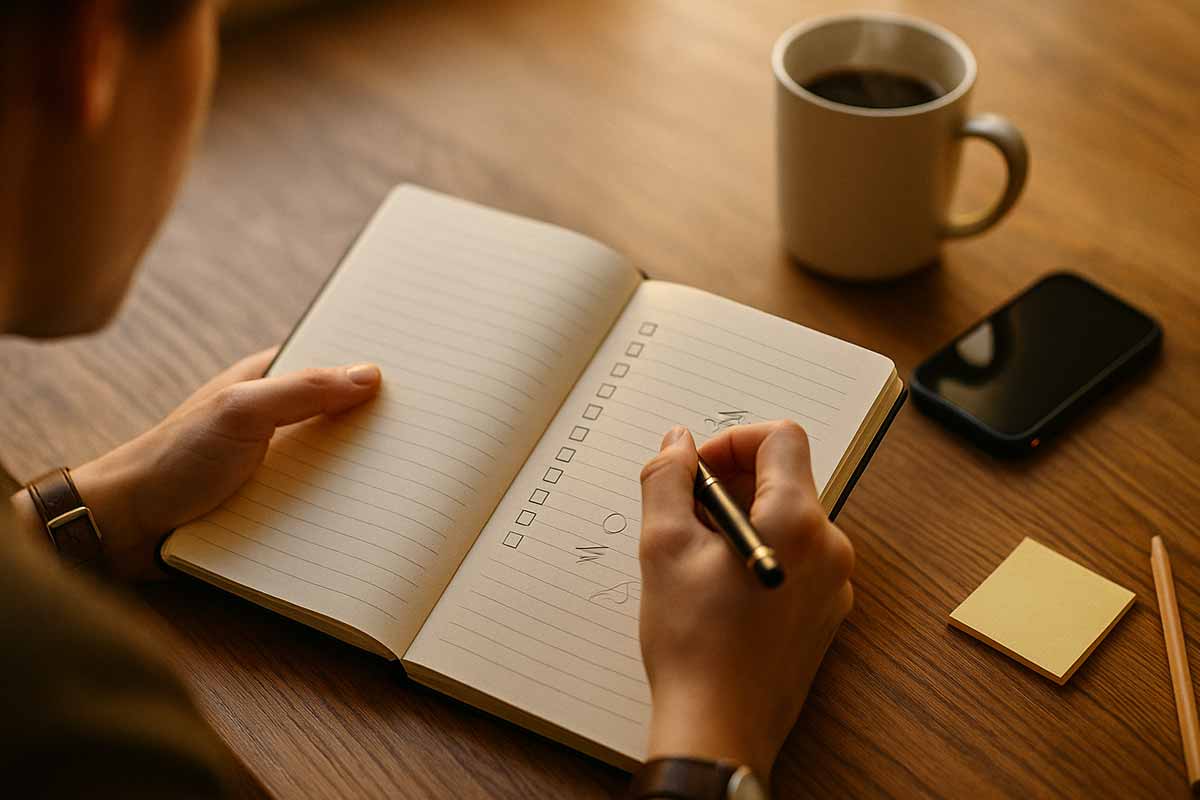Pens move with purpose because paper keeps your focus honest and your choices clear. While apps promise speed, a page shapes choices, filters noise, and keeps goals visible. Behind that simple habit, psychology points to six stable traits, supported by cognitive science, personality research, and behavior studies. You avoid constant alerts, yet you track progress with clarity. The notebook on your desk looks modest, yet it reveals more than any shiny productivity app.
Conscientious planning that turns priorities into finished tasks
People who keep paper lists score high on conscientiousness, the trait linked to order and follow-through. Writing each step forces a clear sequence, also called hierarchical planning by researchers. Because space is limited, you choose what matters most. Noisy extras fall away, and energy flows toward goals that truly count.
That visual structure reduces mental clutter, while it keeps next actions obvious and concrete. Studies on self-regulation show better deadline control when plans live outside the head. Evidence indicates that list-keepers complete up to 25% more tasks within expected windows than those who only think about plans.
One entry becomes a cue, then the cue becomes action, and progress compounds with each strike-through. Within that loop, psychology sees a clear signal: deliberate choice beats passive drift. The small page builds focus through limits, and the limits build confidence as commitments close, line by line.
Cognitive off-loading explained through psychology and simple tools
Moving tasks onto paper off-loads working memory, which stays limited and easily stressed by cues. A written list becomes a trusted cache, so the brain can think instead of store. With reminders captured, attention shifts to reasoning, creativity, and calm problem solving during real days, not ideal days.
Researchers at the University of Tokyo found stronger conceptual grasp with handwriting than typing. Writing slows input and reduces mental load. That slower pace forces selection, while the page shows structure. You process ideas more deeply because your hands filter noise and your eyes track clean steps.
People who reach for pens often sense this benefit before they can name it. Within that choice, psychology sees wise friction: you trade speed for clarity, then you gain momentum. Tasks land on paper, thinking grows lighter, and progress arrives because bandwidth is finally freed for real work.
Tactile feedback that bonds goals to the senses
The slight drag of ink across paper gives a tiny, satisfying click. That physical cue ties goals to the body, which brings emotion into focus. Behavioral science links such cues to stronger follow-through because the system rewards progress with a feeling you can trust. That holds even on difficult days.
Crossing an item off a paper list releases a small hit of dopamine, researchers note. The reward feels sharper than tapping a digital box. Because the page resists, action gains weight. A step completed shows up as a bold line, then your brain records real closure.
Those cues steady plans when your day turns messy, since the page still holds direction. Within this loop, psychology observes how sensory feedback supports implementation intentions, the when-and-where details that drive action. You feel the plan, you see proof, and you keep moving because progress now feels concrete.
Metacognitive habits rooted in psychology and deliberate slowness
Handwriting slows thinking to about 20 to 30 words per minute, which builds helpful friction for steady focus. That pace invites review while you plan. As you draft and revise, you monitor energy and estimate time. You also check values, so tasks align with what actually matters this week.
Educational psychologist John Dunlosky describes such reflective cycles as a mark of expert learners and strategic thinkers. Your notebook works like a mirror that also guides action. You see scope, tradeoffs, and risks on one page. You then adjust sequence without fuss because your plan becomes visible and flexible.
Small edits keep the system honest, since plans change and life shifts. Inside that rhythm, psychology notes a compound return: better judgments arrive because you review choices sooner. Reflection becomes fast and light, while progress speeds up later, since early corrections remove rework and prevent dead ends.
Self-regulation, silent tools, and mindful presence
Digital tools ping and flash, while a paper planner sits quiet until you open it. Choosing that silence signals strong self-regulation, since you direct attention without constant prompts. People who return to their notebook set standards internally, then monitor progress through the day on their own terms.
Self-regulation theory links such habits to prefrontal circuits that support willpower and delayed rewards. Mindfulness researchers describe presence as paying attention on purpose, in the moment, without harsh judgment. A list supports that state because it shows the whole field at once, so you face reality with calm honesty.
Many report lower anxiety about unfinished work because the notebook becomes an anchor for attention. Justin Brown and shaman-author Rudá Iandê tied grounded action to steady presence in Laughing in the Face of Chaos. Within that spirit, psychology sees paper as a simple ritual that steadies plans and restores agency.
Why these six traits turn paper into a quiet advantage
Phones count steps and ping reminders, yet a page builds something deeper. Handwritten lists support focus, lighten mental load, and strengthen follow-through. They add rich cues, invite reflection, and reward steady attention with visible progress. Across days and seasons, psychology links pen and paper to reliable growth. Clear choices and small wins stack into lasting change. You move with intention, you finish what counts, and you feel calm because your plan stays in view.
